History of Yaroslavl
Foundation of Yaroslavl
The oldest settlement on the territory of Yaroslavl (the 5th-3rd millennium BC) was found on the left bank of the Volga opposite Strelka (a cape at the confluence of the Volga and Kotorosl rivers).
In the 9th century, a large Scandinavian-Slavic settlement was formed near Yaroslavl. During the excavations, Scandinavian weapons, runic inscriptions, chess pieces, and the largest treasures of Arab coins in northern Europe were discovered. Apparently, this “proto-Yaroslavl” was a major center on the Volga trade route. Soon after the founding of Yaroslavl, this settlement fell into decay.
Yaroslavl is the oldest existing Russian city on the Volga River. At the beginning of the 11th century, it was founded by Prince Yaroslav the Wise at the confluence of the Kotorosl River into the Volga. Along the Kotorosl it was possible to get to Rostov, the main center of North-Eastern Rus. The first written mention of Yaroslavl is dated 1071. The name of the city is traditionally associated with the name of its founder: “Yaroslavl” - “Yaroslav’s city”.
During the first two centuries of its existence, Yaroslavl remained a small border town of the Rostov-Suzdal land. The first stone buildings in Yaroslavl appeared shortly before the Mongol invasion, in the 1210s. In 1238, the town was sacked by the Mongols.
More Historical Facts…
Yaroslavl in the 14th-17th century
From the second half of the 14th century, the fragmentation of the Yaroslavl Principality began, part of the town itself became the property of the Moscow rulers. In 1380, the Yaroslavl druzhinas took part in the Battle of Kulikovo. The final annexation of Yaroslavl to Moscow took place in 1463.
From the middle of the 16th century, when the entire Volga became the territory of Russia, active links between Europe and the East through the Northern Dvina and the White Sea were established along it. Yaroslavl began to turn into the largest transit trade center along the Volga. English merchants set up an inner harbor in the town, built warehouses with products for sale in Russia and Asia; then the Dutch and German trading posts were opened.
Yaroslavl played a prominent role in the events of the Time of Troubles in Russia. From April to June 1612, the second people’s militia was garrisoned in the town. At that time, Yaroslavl performed the functions of the Russian capital, coins were minted here. When the militia was replenished with new forces, it moved to Moscow and took control of it.
In the spring of 1613, on the way from Kostroma to Moscow, the newly elected Tsar Mikhail Fedorovich Romanov stayed in Yaroslavl. From here he sent his first royal letter, in which he informed the Zemsky Council of his consent to the throne. In memory of the events of the Time of Troubles, the coat of arms of Yaroslavl is crowned with the Golden Cap (Monomakh’s Cap).
Yaroslavl quickly became a major trade and handicraft center, the second largest city in Russia and the third in terms of trade turnover. In the 17th century this town reached its highest prosperity. It was the century of church building in Yaroslavl. In total, 3 monasteries and at least 60 stone churches were constructed. At the same time, the Yaroslavl art school was formed - one of the greatest manifestations of Russian art of that time. By the middle of the 17th century, about 15 thousand people lived in Yaroslavl.
Yaroslavl in the 18th-19th centuries
With the beginning of the reforms of Peter the Great, Yaroslavl lost its significance as the second city in Russia. Peter’s reluctance to trade through Arkhangelsk negatively affected the commercial well-being of the town. The dynasties of Yaroslavl merchants went bankrupt, but the development of industry came to replace trade. In 1722, the Yaroslavl merchant family of Zatrapeznyye began the construction of a linen manufactory on the right bank of the Kotorosl River - one of the first and largest in the country.
After the formation of the Yaroslavl Province (1719), the town became an ordinary provincial center, although still very significant. In 1722, the population of Yaroslavl was 22 thousand people. In 1750, Fyodor Volkov founded the first public theater in Russia in Yaroslavl, which in January 1752 moved to St. Petersburg. As of 1771, there were 11 large industrial enterprises in Yaroslavl.
In 1777, it became the administrative center of the Yaroslavl Governorate. In 1788, in the library of the last abbot of the Spassky Monastery in Yaroslavl, a unique work of Old Russian literature, The Tale of Igor’s Campaign, was found. In 1778, the first regular development plan for Yaroslavl was approved.
During The French invasion of Russia (1812), the wounded were taken from the battlefields to Yaroslavl. The flight of the nobility from Moscow captured by Napoleon to Yaroslavl is reflected in the pages of the novel War and Peace by Leo Tolstoy. Marquis de Custine dedicated two chapters of the famous book “Russia in 1839” to his stay in Yaroslavl.
In 1865, the first museum (natural history) was opened. Since 1870, it had a direct railway connection with Moscow, St. Petersburg, Kostroma. According to the census of 1897, there were 71.6 thousand residents in Yaroslavl.
Yaroslavl in the first half of the 20th century
At the beginning of the 20th century, Yaroslavl was one of the largest cities in Central Russia with a developed industry. In total, there were more than 50 enterprises with 15 thousand workers in the city (8th place among the industrial centers of European Russia). At the same time, Yaroslavl was considered one of the most beautiful cities in the upper Volga region and even called “Russian Florence”. In 1913, a railway bridge across the Volga was opened. In 1914, the population of Yaroslavl was about 111,200 people.
The most destructive event in the recent history of the city was the Yaroslavl uprising against the Bolsheviks in July 1918. Artillery shelling and bombing of Yaroslavl by the Red Army led to fires, significant destruction of residential buildings, industrial enterprises, and historical monuments.
In 1920, the development of the city began according to the “Plan of Greater Yaroslavl” - its limits were expanded more than 5 times; new streets were formed. In 1921, tram traffic was resumed, in 1922, a sewerage was built in the center, in 1924 - a new telephone exchange to replace the destroyed one. By the mid-1920s, Yaroslavl again had over 100,000 residents. In 1924, all the city’s museums were merged into the Yaroslavl State Regional Museum.
In 1929, the Yaroslavl Governorate was abolished, and Yaroslavl became part of Ivanovo Industrial Oblast. In November 1926, the first stage of the Lyapin power plant was completed, which created the basis for the development of industry in the city. In 1932, the first synthetic rubber plant in the USSR was built in Yaroslavl. By the early 1940s, the Yaroslavl Tire Plant produced about 80% of the tires for Soviet cars.
In 1936, Yaroslavl became the administrative center of the newly formed Yaroslavl Oblast. In 1939, the population of the city was about 300,000 people.
During World War II, more than 500,000 residents of Yaroslavl Oblast went to the front, more than 200,000 of them died or went missing. At the end of autumn 1941, the Germans were about 50 km from the borders of the region, the city was subjected to raids by German aircraft. In June 1943, the Yaroslavl Tire Plant was completely destroyed.
Yaroslavl after the Second World War
In 1958, the Yaroslavl Automobile Plant was transformed into the Yaroslavl Motor Plant, which became the main supplier of diesel engines for the country’s cars. In 1961, the Novoyaroslavl oil refinery was opened, one of the largest oil refineries in central Russia.
Yaroslavl was included in the most ambitious tourist project of the late Soviet era - the so-called Golden Ring of Russia. Some of its numerous architectural monuments were restored. On the other hand, in the 1970s and 1980s, some of them were still destroyed by the decision of local authorities.
In the late 1980s, the population of Yaroslavl reached its peak - about 650 thousand people. After that, the population began to decline. A lot of churches were returned to the Russian Orthodox Church.
In 2000, the Russian animated short film “The Old Man and the Sea”, directed by the Yaroslavl animator Aleksander Petrov, won the Academy Award for Best Animated Short Film. In 2005, the historical center of Yaroslavl was included in the UNESCO World Heritage List as an urban planning monument.
In 2006, a new master plan for the development of Yaroslavl was approved. In 2007-2010, active construction of new and reconstruction of existing facilities was carried out in preparation for the celebration of the millennium of Yaroslavl in 2010. In particular, the zoo and the Yubileiny bridge across the Volga were opened; Moskovsky Avenue and the Volga embankment were reconstructed. A number of historical objects of church and civil architecture were restored.
Streets of Yaroslavl
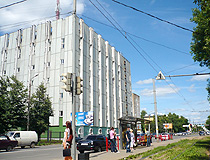
Summer in Yaroslavl
Author: John Yar
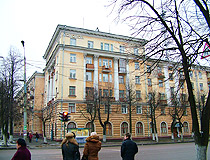
Soviet architecture in Yaroslavl
Author: Igor Koch
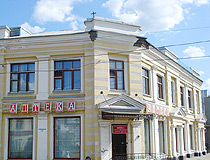
Pharmacy in Yaroslavl
Author: Yurik Safronov
Yaroslavl - Features
Yaroslavl is located in the central part of the East European Plain on both banks of the Volga River at the confluence of the Kotorosl River; about 270 kilometers northeast of Moscow. The City Day in Yaroslavl is usually celebrated on the last Saturday of May. The best time to visit the city is from late May to September.
The climate in the city is moderately continental. Winters in Yaroslavl are relatively cold and snowy, lasting more than five months. The average January temperature is minus 10.5 degrees Celsius. Summers are moderately warm and humid. The average July temperature is plus 18.1 degrees Celsius.
The coat of arms of Yaroslavl, based on the historical coat of arms of 1778, depicts a black bear standing on its hind legs and holding a golden ax. According to legend, in the past, at the confluence of the Volga and Kotorosl, there was a pagan settlement - Medvezhy Ugol. Once a young Rostov prince Yaroslav the Wise was sailing along the Volga on a boat with his retinue.
In Medvezhy Ugol, Yaroslav ordered a stop and went ashore, as rumors reached him that locals were attacking merchant ships. The prince ordered the pagans to stop the robbery and convert to Christianity. But they did not want to obey and set a bear, their sacred animal, on him. Yaroslav killed the “fierce beast” with an ax and ordered to found a fortress in this place named after the founder - Yaroslavl.
Today, Yaroslavl is a large industrial center. The machine-building industry is represented here by such enterprises as a motor plant, an electric locomotive repair plant, a carriage repair plant, an electric machine-building plant, a shipyard, and others. The oil refining and chemical industries have undergone significant development. There are also a number of light and food industry enterprises. Tourism plays an important part in the city’s economy too.
Yaroslavl stands at the intersection of important roads, rail and waterways. In particular, the federal highway M8 “Kholmogory” Moscow - Yaroslavl - Vologda - Arkhangelsk passes through the city, as well as the road from Yaroslavl to Kostroma. The trip by train “Yaroslavl - Moscow” takes about 3 hours. There is a river port and an airport in Yaroslavl. The airport offers regular flights to Moscow, St. Petersburg, Kazan, Krasnodar, Sochi, Mineralnye Vody, Kaliningrad. Urban transport is represented mainly by buses and minibuses, there are also trolleybuses and trams.
The design of the Russian 1,000 ruble banknote is dedicated to Yaroslavl. It depicts such sights of the city as the Monument to Yaroslav the Wise, the Chapel of the Kazan Icon of the Mother of God, the belfry with the Church of the Pechersk Icon of the Mother of God and the Holy Gates with the Church of the Introduction of the Transfiguration Monastery, as well as the coat of arms of Yaroslavl.
Yaroslavl is one of the few provincial cities in Russia, in the development of which all the main directions of Russian architecture of the 16th-20th centuries are represented. In total, about 800 architectural monuments have been preserved in this city. The historical center of Yaroslavl, on the territory of which there are about 140 architectural monuments, is one of the UNESCO World Heritage Sites. Its buildings are an outstanding example of the mutual cultural and architectural influence between Western Europe and Russia.
It is one of the most picturesque cities of the famous tourist route “The Golden Ring of Russia”. This is one of the most popular centers for cultural tourism in Russia. Since 1981, “Jazz over the Volga”, the oldest jazz festival in Russia, has been held in Yaroslavl every two years.
Main Attractions of Yaroslavl
The Volga Embankment in Yaroslavl - probably the most picturesque among all the existing Volga embankments in Russia. It consists of three tiers, from the uppermost of which a great view of the Volga opens. There are walking and cycling paths, gazebos, cafes, bicycle rentals, light and musical fountains. Here you can find the most interesting museums of Yaroslavl and several churches for which this city is so famous. The route is only two kilometers long, but its richness with historical and architectural objects is simply amazing.
Park on Strelka. “Strelka” is a cape at the confluence of the Kotorosl River into the Volga, the historical center of Yaroslavl. In the past, the first wooden Yaroslavl Kremlin was located here. The park was renovated to celebrate the millennium of Yaroslavl in 2010. Its main dominant feature is a monument to the 1000th anniversary of Yaroslavl in the form of a stele topped with a double-headed eagle. At the base of the obelisk there is a figure of Yaroslav the Wise, the founder of Yaroslavl.
Metropolitan Chambers - one of the oldest surviving monuments of civil architecture in Yaroslavl, built as the residence of the Metropolitan of Rostov and Yaroslavl at the end of the 17th century. In the 18th century, the building was used as the palace of the Yaroslavl vice-governor; Empress Catherine II repeatedly stayed there during her visits to Yaroslavl.
Today, the building is occupied by the Museum of Old Russian Art with a rich collection of icons and miniatures. The history of Russian icon painting is more than 600 years old, and all stages of its history are shown in the exhibition. Volzhskaya Naberezhnaya (The Volga Embankment), 1.
Museum of the History of Yaroslavl. The exposition is housed in a historic mansion of the late 19th century that once belonged to the merchant Kuznetsov. Today, it is one of the few Yaroslavl merchant mansions where the original interiors have been preserved. The museum has three permanent exhibitions: “Ten centuries of the history of the city of Yaroslavl”, “From the history of Yaroslavl medicine” and “UNESCO World Heritage Site”. One of the most interesting exhibits is a unique model of Yaroslavl of the 13th century. Volzhskaya Naberezhnaya, 17.
Governor’s House and Garden. The governor’s estate was built as the residence of the Yaroslavl mayor in the 19th century. At the same time, a garden was laid out around the house. It was often used by Russian emperors as a traveling palace; all rulers from Alexander I to Nicholas II visited it. Today, the complex houses the Yaroslavl Art Museum with the following exhibitions: “Russian art of the 18th - early 20th centuries” and “Art of the 20th century”, “Governor’s Garden - Sculpture in the open air”. Volzhskaya Naberezhnaya, 23.
Museum complex “Music and Time” - one of the first private museums in Russia located in a small mansion on the Volga embankment. The museum presents bells, clocks, musical instruments, irons, samovars, music boxes, gramophones, and old records. The museum complex also includes a porcelain museum, as well as a museum of Kasli casting and samovars. There is an organ hall where concerts are regularly held, including those on old musical instruments. Volzhskaya Naberezhnaya, 33A.
Museum of Foreign Art. The exposition of this museum is devoted to Western European painting and sculpture and decorative and applied art of Japan and other countries of the East. The exhibits include works by famous Dutch, Italian, English, and French artists. The museum has a garden with exotic plants. Sakura blooms here in spring and French roses in summer. Sovetskaya (Soviet) Square, 2.
Transfiguration Monastery - an old abolished monastery that played an important role in the history of Yaroslavl and Russia. It is located in the historical center of Yaroslavl, on the bank of the Kotorosl River. On its territory you can see architectural monuments of the 16th-19th centuries including one of the oldest churches in Yaroslavl - the Transfiguration Cathedral (1506-1516) with unique frescoes from the time of Ivan the Terrible. Bogoyavleniya Square, 25.
Church of Elijah the Prophet (1647-1650) - an outstanding architectural monument of the Yaroslavl school of architecture of the 17th century located on the central square in the historical part of Yaroslavl. The uniqueness of this church lies in the fact that it has survived to this day in its original form, practically unchanged, including the interiors. Sovetskaya Square, 7.
Church of John the Baptist in Tolchkovo (1671-1687) - a unique monument of Russian architecture of the 17th century, one of the most famous works of the Yaroslavl school of architecture of the period of its heyday. The only fifteen-domed church in Russia, it is located on the right bank of the Kotorosl River at 2-Ya Zakotorosl’naya Naberezhnaya, 69.
Svyato-Vvedensky Tolgsky Convent - the largest convent in Russia located on the left bank of the Volga north of Yaroslavl. Its history goes back over 700 years, during which a cathedral of the 17th century, several churches, cells, utility buildings, chapels, and a magnificent park of Siberian cedar appeared here.
Vlasyevskaya Tower and Znamenskaya Church - a double building in the historical center of Yaroslavl. Vlasyevskaya Tower is a defensive structure of the 17th century, one of the first stone buildings in Yaroslavl. Over time, a chapel was added to this structure, which grew into Znamenskaya Church and formed a single architectural complex with the tower. The church acquired its present forms in 1897. Pervomayskaya Street, 2?.
Show-Model “The Golden Ring” - a unique educational and entertainment project, where models of all towns of the Golden Ring of Russia are collected under one roof. Moreover, these are not just models of their main attractions on a reduced scale - the creators tried to show the life of these towns, convey their sound and atmosphere. Here residents walk and communicate with each other, cars slow down at traffic lights, and trains arrive at stations on schedule. Sovetskiy Lane, 2/23?.
Ferris Wheel “The Golden Ring” - the highest place for sightseeing (65 meters) in the towns of the Golden Ring tourist route. Here you can enjoy the historic city center from a bird’s eye view and see all the main attractions of Yaroslavl. Kotorosl’naya Naberezhnaya, 53.
Yaroslavl Zoo - one of the largest zoos in Russia, covering an area of more than 120 hectares. Opened in 2008, it became the first landscape-type zoo in the country with hundreds of animal species living in conditions as close as possible to natural ones. Shevelyukha Street, 137.


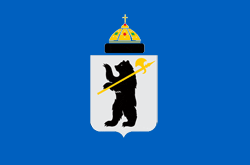
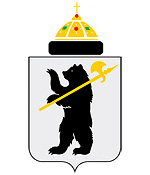
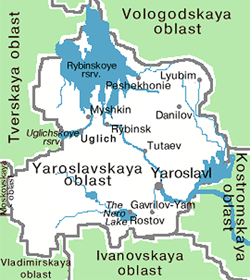



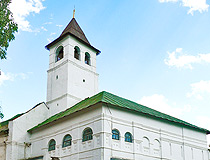
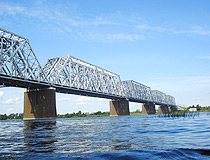
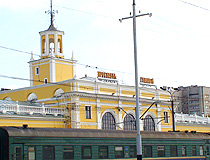
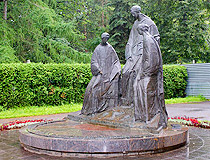
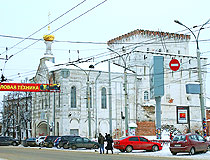
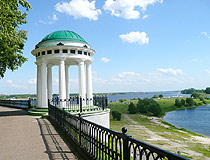
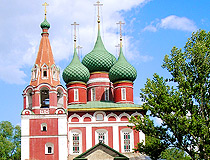
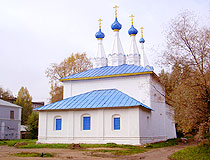
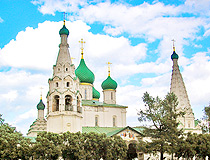
The comments of our visitors
All 6 comments